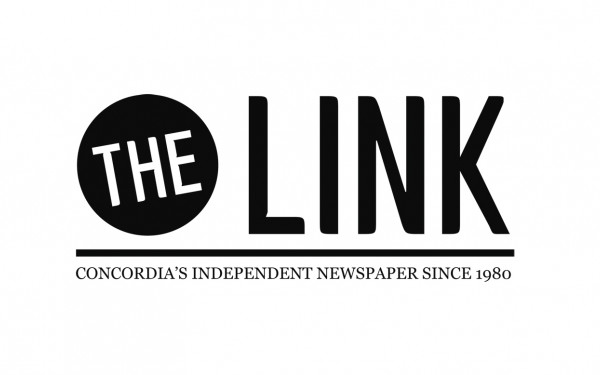HIV/AIDS Lecture Highlights Montreal as Centre for Activism
Visiting Professors Present The City’s Longstanding History of Activism
In a photo from 1988, a woman with red hair proudly holds a banner reading, “AIDS Action Now.”
These were distributed during the Toronto Pride parade to “magnify the AIDS activist message,” explained Gary Kinsman, a retired Laurentian University professor, and veteran HIV/AIDS advocate.
The photo was presented as part of a discussion hosted by Concordia University’s ongoing Community Lecture Series on HIV/AIDS. The two project heads, Kinsman and Alexis Shotwell, a professor from Carleton University, visited Concordia on Thursday, Oct. 27. They presented their work, and announced the launch of a series of interviews with Montreal-based AIDS/HIV activists.
Carleton University’s AIDS Activism History Project started four years ago. The project’s objectives stemmed from a desire to explore the rich historical achievements and struggles of HIV/AIDS activism outside of an academic or journalistic context.
“We wanted to capture some of what happened—what people did in their own words,” Shotwell said during the lecture in the LB building.
With funding from the Social Sciences and Humanities Research Council, the AAHP was given five years worth of funding to travel the country to interview advocates active from 1986 to 1996. They detailed their experiences in the highly complex social-political atmosphere of the illness.
The decade that the team chose is full of history. It was a “period where people living with HIV/AIDS started to organize and [began] to have problems with some of the existing AIDS service organizations,” said Kinsman, adding that this era overlapped with the emergence of activism for making treatment accessible.
Part of the project’s motivation was to try to recover as much of the history around AIDS activism as possible, explained Kinsman.
But AIDS activism didn’t just stem out of a medical issue. “It’s a political issue,” Kinsman stated during the presentation.
“We sort of see [the project] working against the social organization of forgetting,” he said, adding that positive activism in those ten years has been systematically forgotten. That activism, he said, is what brought about concrete changes in the lives’ of people affected by the disease.
The project’s reach, Shotwell hopes, will be used not only by people who are studying AIDS activism in a historical context, but as well as material for schools.
The scope of the project has travelled from the East Coast, starting in Halifax, N.S., to Vancouver, B.C. The research duo soon realized they couldn’t do what they were trying to do without placing a focus on Montreal.
According to Kinsman, the significant activism that occurred in Montreal has received less attention than in other urban centres.
“I’ll never forget the sight of our ragtag group of 300 protesters brushing past the security guards in the lobby of the Palais de Congress. The fleet of “Silence=Death” posters gliding up the escalator to the opening ceremony or our chants thundering throughout the cavernous hall.” – Ron Goldberg
The presentation highlighted a protest of 300 people inside a 1989 AIDS Conference, considered to be one of the most important Montreal-based demonstrations of AIDS activism.
“I’ll never forget the sight of our ragtag group of 300 protesters brushing past the security guards in the lobby of the Palais de Congress,” wrote Ron Goldberg, a contributor for ACT UP, reflecting on the 1989 conference. “The fleet of “Silence=Death” posters gliding up the escalator to the opening ceremony or our chants thundering throughout the cavernous hall.”
The storming of the 1989 convention established some of the first moments of organized activism, continued Goldberg. He explained that they occupied the conference because it portrayed people living with AIDS “mainly as abstractions, their lives reduced to statistics on spreadsheets, their needs and desires mere sidelights to the noble pursuit of science,” marginalizing the communities affected by the disease.
It played a pivotal role—globally speaking, not just in Montreal—in terms of reorienting how these official AIDS conferences took place, according to Kinsman.
The interviews that Shotwell and Kinsman have conducted in Montreal detail the experiences of many activists in the city: How they organized, what it was like, what it meant for the community.
1web_900_600_90.jpg)
Kinsman reiterated that the work of ACT UP Montreal is “another aspect that’s not often remembered.” Groups like these established a base of resources that people affected by the disease today can benefit from.
“A lot of people don’t remember that,” explained Kinsman. “But nonetheless that was a major change and it helped not only people living with AIDS and HIV, but expanded the funding for treatment also helped a lot of other people facing various different health problems and emergencies in their lives.”
Due to the history of social struggle in Montreal and Quebec, the activism that takes place today is still more prominent than in other places in Canada, according to Shotwell. In the decade that the researchers look at, they discovered that these types of manifestations about AIDS are still common.
“I feel comfortable saying that energy and approach to directly confronting injustice has weaned much more in the rest of Canada than it has in the Montreal context,” Shotwell said. “It really arose out of an incredibly rich public culture of fighting back, and contributed to that culture and helps maintain it.”
Through the interviews conducted by the AAHP, accessible online as of last Thursday, Shotwell said, ”I think we can say to a really significant degree, that Montreal continues to be a beacon for the rest of the political context around what you could do or be.”

web_900_587_90.jpg)
2web_900_600_90.jpg)
_600_832_s.png)


2_600_375_90_s_c1.jpg)

_600_375_90_s_c1.jpg)